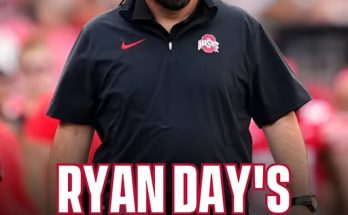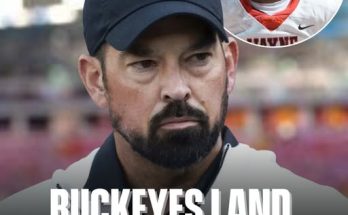The Arizona Cardinals’ offseason has been one of incremental changes, aimed more at reshaping the culture than making flashy headlines. But when they traded for former Eagles defensive end Josh Sweat, many fans saw it as a step toward improving a pass rush that ranked near the bottom of the NFL in sacks last season. However, while local optimism ran high, league executives aren’t sharing in the enthusiasm. According to several sources around the NFL, Arizona’s acquisition of Sweat has been met with tepid reviews, with some execs questioning the fit, the timing, and even the upside.
On the surface, Josh Sweat is an intriguing player. A 2018 fourth-round pick out of Florida State, Sweat worked his way into a significant role on a loaded Eagles defensive front. In 2022, he posted 11 sacks and made his first Pro Bowl, showcasing elite athleticism and bend off the edge. But in 2023, his production regressed, finishing with just 6.5 sacks, and the Eagles’ coaching staff gradually began reducing his snaps in favor of younger, more explosive talent. By the end of the season, it became clear he was no longer part of Philadelphia’s long-term plans.
For the Cardinals, who have spent the past two seasons in a rebuilding phase, acquiring Sweat seemed like a savvy move. He’s still just 26 years old, theoretically entering his prime, and he comes with playoff experience from a Super Bowl run. Yet, the league’s consensus appears to differ. One AFC executive bluntly called the move “a lateral decision at best,” pointing to Sweat’s inconsistency and the fact that he’ll now be expected to anchor a pass rush without the luxury of playing next to All-Pros like Fletcher Cox or Haason Reddick.
“He’s a solid rotational guy,” the executive said, “but I wouldn’t build my pass rush around him. If Arizona thinks he’s the answer to their edge problems, they’re going to be disappointed.”
That sentiment was echoed by multiple scouts and front-office personnel who viewed Sweat as a product of the talent-rich environment in Philadelphia. While his raw tools are obvious—long arms, quick first step, and enough speed to challenge offensive tackles—he has yet to prove he can consistently win one-on-one matchups or stay healthy over a full season. Durability remains a concern, as does his tendency to disappear in games where he isn’t schemed into favorable matchups.
“Watch the tape,” one NFC South scout said. “When he’s hot, he looks great. But when you ask him to create pressure on his own, the win rate drops. He needs help. In Philly, he got that. In Arizona, he won’t.”
From the Cardinals’ perspective, the trade made sense. They gave up a late-round pick, and his contract, while not cheap, isn’t an albatross. Head coach Jonathan Gannon also has familiarity with Sweat, having worked with him as the Eagles’ defensive coordinator. Gannon has publicly praised Sweat’s work ethic and scheme versatility, saying he’s the kind of player who can set the tone in a young locker room.
Yet even that connection has drawn skepticism from rival evaluators. Some believe Gannon may be overestimating Sweat’s value due to their prior relationship, mistaking a good complementary player for a franchise cornerstone.
“There’s always a danger when coaches bring in ‘their guys,’” another NFC executive said. “They’re emotionally invested. But that doesn’t mean the guy fits the new situation. Philly is not Arizona.”
The Cardinals are in a unique spot. After moving on from veterans like Chandler Jones and J.J. Watt, the team has struggled to generate pressure. In 2023, they ranked 31st in sack percentage and lacked a true game-changer on the edge. Second-year player BJ Ojulari showed flashes, and rookie Dante Stills was effective against the run, but neither has emerged as a double-digit sack threat. Adding Sweat was supposed to fill that gap—but again, execs question whether he’s capable of being that player.
“He’s not going to scare anybody,” one AFC North personnel director said. “You’re not game-planning around Josh Sweat.”
There’s also concern about Sweat’s fit within Arizona’s current defensive scheme. While Gannon runs a hybrid front that allows for flexibility, Sweat has historically thrived in wide-9 alignments, which maximize space and allow him to leverage his speed. In Arizona’s more conservative front, there’s uncertainty as to whether he’ll be afforded those same opportunities.
“You’re not going to turn him into something he’s not,” the personnel director continued. “If you ask him to set the edge and read, rather than attack, you’re wasting him.”
Beyond the Xs and Os, some believe the move sends a confusing message to the rest of the locker room. Arizona has been patient in its rebuild, focusing on drafting and development rather than making splashy veteran moves. Bringing in a player like Sweat, who comes with expectations and a hefty price tag, could disrupt that process.
“It’s not that he’s a bad guy,” an NFC West source said. “But you’re trying to build something from the ground up. Sometimes that means taking your lumps. Trading for guys in that ‘not quite elite but not cheap either’ tier muddies the waters.”
Still, not everyone is down on the acquisition. A few executives conceded that if Sweat can recapture his 2022 form, the Cardinals could end up with a bargain. And in a league where edge rushers are always in high demand, adding one with Pro Bowl experience—even if flawed—has value. But those same voices were quick to qualify their optimism with a big “if.”
“It’s a coin flip,” one general manager said. “There’s upside there. But I wouldn’t bet on it. He’s never been the guy. You don’t just become that overnight.”
The situation is also complicated by Arizona’s overall trajectory. The team is expected to have a high pick again in the 2026 NFL Draft, and many around the league believe they’re still a year or two away from serious contention. That makes the Sweat move feel out of sync with the broader timeline, especially since he’s not on a rookie contract and may not be around when the rebuild peaks.
“Why spend capital on a guy whose prime might not align with your window?” one AFC West scout asked. “That’s the bigger question.”
Sweat, for his part, has remained quiet since the trade. He released a brief statement thanking the Eagles and expressing excitement about joining the Cardinals, but he hasn’t addressed the expectations or doubts surrounding his role. Inside the Cardinals’ facility, he’s reportedly been professional and focused, drawing praise from teammates during early workouts.
Yet even within Arizona, the move is viewed more as a calculated risk than a surefire solution. Gannon and GM Monti Ossenfort are betting that Sweat can thrive with more responsibility and become the tone-setter the team desperately needs. But if that bet doesn’t pay off, it could be another setback in a process that already demands patience from an increasingly restless fanbase.
The truth is, building a defense in today’s NFL requires more than patchwork additions. The best units are those that grow together over time, developing chemistry and cohesion. Sweat may provide a temporary boost, but executives around the league remain unconvinced that he’ll move the needle long-term.
“He’s not going to be a bust,” one exec concluded. “But don’t expect a miracle. Arizona still has a long way to go.”
As for Cardinals fans hoping Sweat becomes the next big thing, the jury is still out. He’s talented, yes. He’s flashed potential. But in a league where impact edge rushers are the difference between good and great, many around the NFL are skeptical that Josh Sweat can be that difference-maker in the desert.



